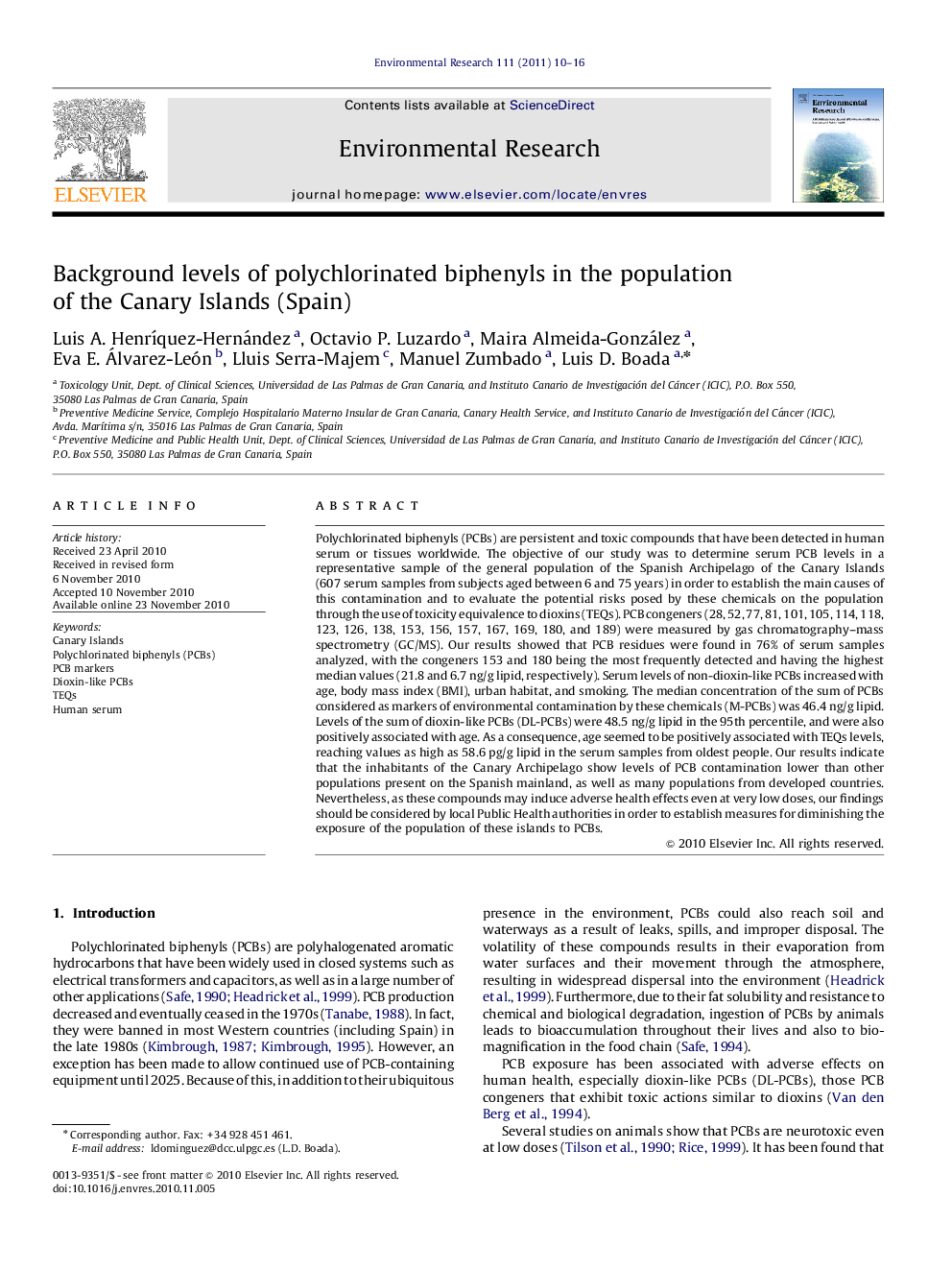| کد مقاله | کد نشریه | سال انتشار | مقاله انگلیسی | نسخه تمام متن |
|---|---|---|---|---|
| 4470002 | 1314383 | 2011 | 7 صفحه PDF | دانلود رایگان |

Polychlorinated biphenyls (PCBs) are persistent and toxic compounds that have been detected in human serum or tissues worldwide. The objective of our study was to determine serum PCB levels in a representative sample of the general population of the Spanish Archipelago of the Canary Islands (607 serum samples from subjects aged between 6 and 75 years) in order to establish the main causes of this contamination and to evaluate the potential risks posed by these chemicals on the population through the use of toxicity equivalence to dioxins (TEQs). PCB congeners (28, 52, 77, 81, 101, 105, 114, 118, 123, 126, 138, 153, 156, 157, 167, 169, 180, and 189) were measured by gas chromatography–mass spectrometry (GC/MS). Our results showed that PCB residues were found in 76% of serum samples analyzed, with the congeners 153 and 180 being the most frequently detected and having the highest median values (21.8 and 6.7 ng/g lipid, respectively). Serum levels of non-dioxin-like PCBs increased with age, body mass index (BMI), urban habitat, and smoking. The median concentration of the sum of PCBs considered as markers of environmental contamination by these chemicals (M-PCBs) was 46.4 ng/g lipid. Levels of the sum of dioxin-like PCBs (DL-PCBs) were 48.5 ng/g lipid in the 95th percentile, and were also positively associated with age. As a consequence, age seemed to be positively associated with TEQs levels, reaching values as high as 58.6 pg/g lipid in the serum samples from oldest people. Our results indicate that the inhabitants of the Canary Archipelago show levels of PCB contamination lower than other populations present on the Spanish mainland, as well as many populations from developed countries. Nevertheless, as these compounds may induce adverse health effects even at very low doses, our findings should be considered by local Public Health authorities in order to establish measures for diminishing the exposure of the population of these islands to PCBs.
Research Highlights
► PCBs are persistent and toxic compounds that have been detected in human serum all over the world.
► We determine serum PCB levels in a representative sample of the general population of the Spanish Archipelago of the Canary Islands (607 serum samples from subjects aged between 6 and 75 years).
► PCB residues were found in 76% of the samples, the congeners 153 and 180 being the most frequently detected and at the highest median values; increasing values of PCBs were positively associated to age, urban habitat, and smoking habit; age, urban habitat, and smoking habit were positively associated to increasing values of DL-PCBs, although only age seem to be positively associated to TEQs levels.
► Our results indicate that the inhabitants of the Canary Archipelago show levels of PCB contamination lower than other Spanish populations from the mainland Spain as well as a majority of populations from developed countries.
Journal: Environmental Research - Volume 111, Issue 1, January 2011, Pages 10–16